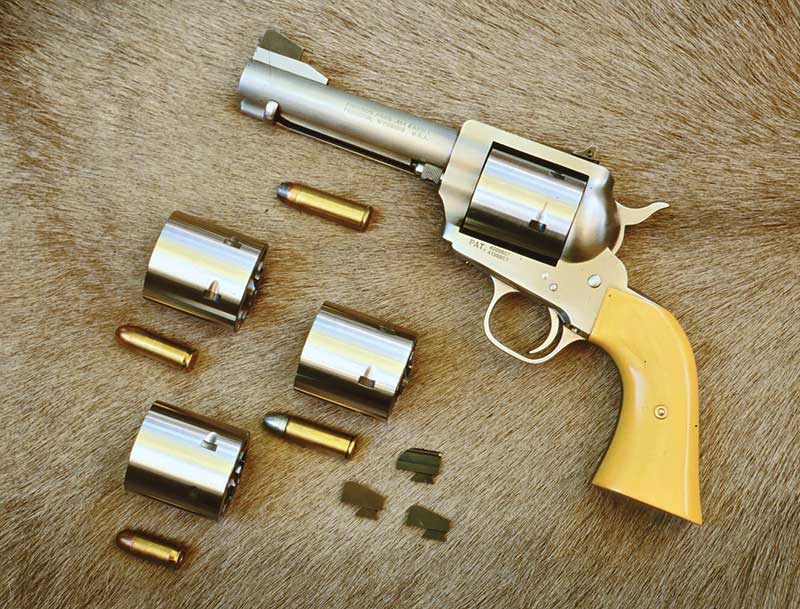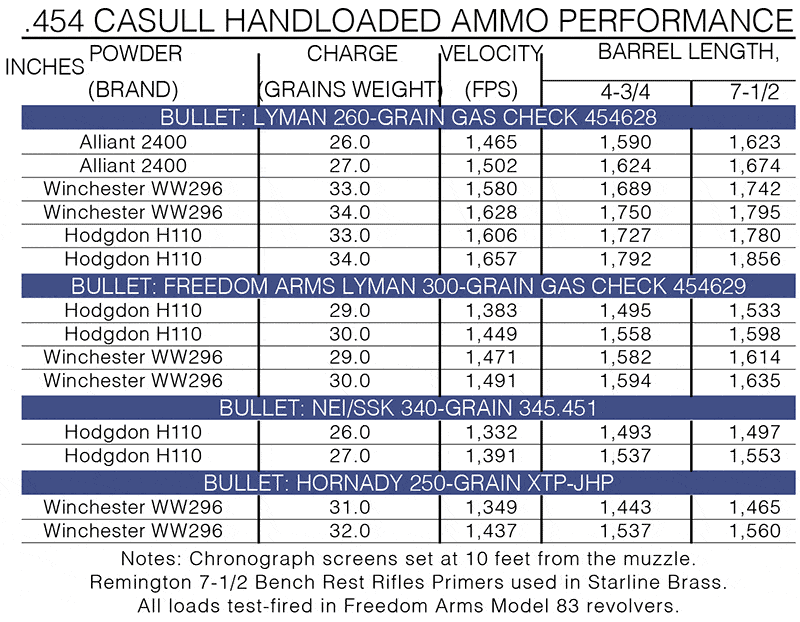Cylinders
The next step was to make an oversize cylinder as large as the Colt Single Action frame would accept. These were made from 4140 steel and heat-treated to Rockwell 42C. Now he was getting somewhere. These cylinders stayed together and there were no more blown frames or top straps. At last he felt he was on the right path and using the Custom Colt with an oversize 5-shot cylinder and a 7-1/2-inch barrel a 230-grain bullet achieved 1,825 fps. In addition, he found 2400 would drive a 250-grain bullet at 1,650 fps while a 300-grain bullet could reach 1,500 fps. This was in 1954 before the advent of the .44 Magnum.
Casull had achieved his goal using both Colt Single Action and Bisley Models with oversized cylinders, however there was something missing and that was safety. He felt he was right on the edge so the next step was to totally handbuild a single action which is exactly what he did. Using a 10-inch barrel with a 1:24-inch twist and a muzzlebrake to help tame the recoil, he was now at 2,000 fps with a 230-grain jacketed .45 ACP bullet. Remember—this is the 1950’s and there were no jacketed .45 Colt bullets available, and before H110 and WW296 arrived, so Casull’s recipe for powder for this load was a special triplex load.
Switching to a 300-grain bullet using 2400, he exceeded 1,700 fps. The .454 Magnum had arrived. Now, all this time and experimenting was done using standard .45 Colt brass. Even to this day I still see from time to time in print a statement to the effect .45 Colt brass is weak. Casull proved this to be a myth more than 50 years ago.








